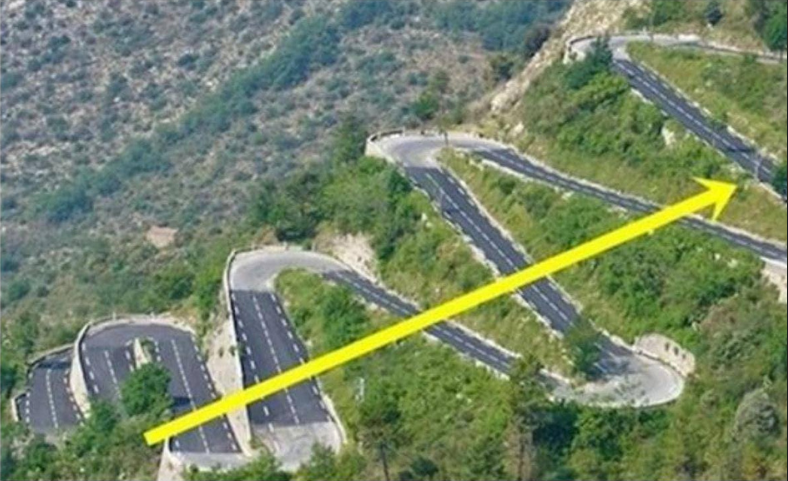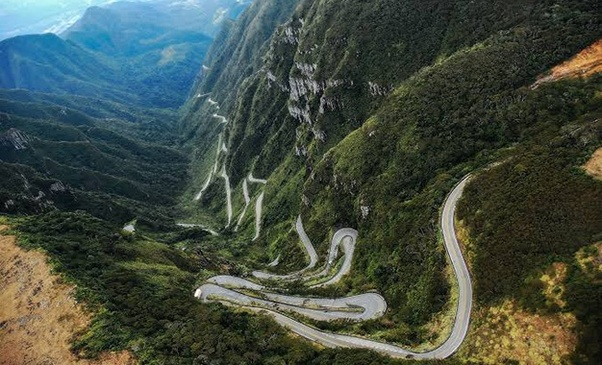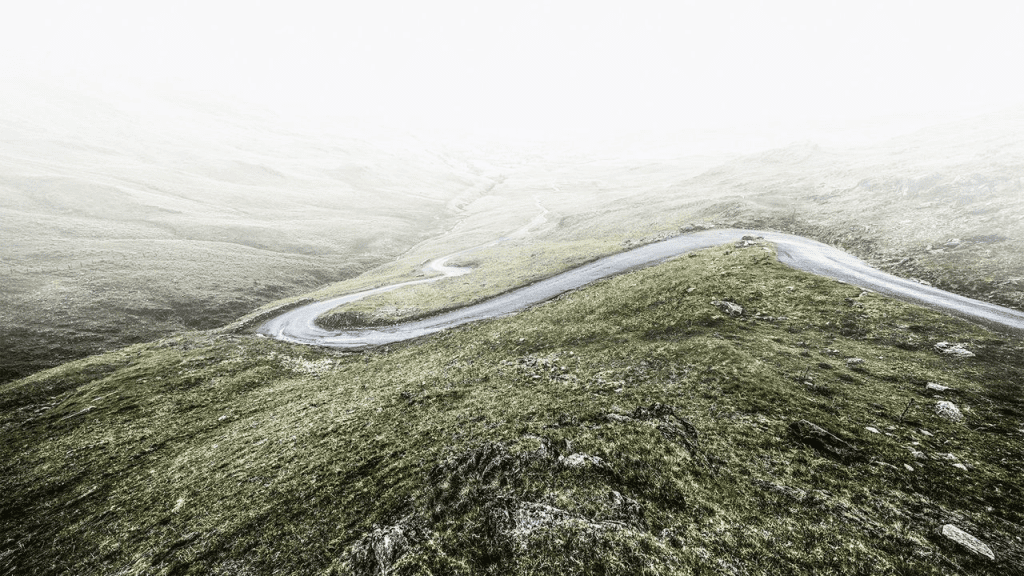When traveling through mountainous regions, have you ever wondered why roads seem to wind and twist endlessly instead of being built in a straight line up the mountain? It’s a question many people ask, and at first glance, it may seem like a straight road would save both time and construction costs. After all, a straight line is the shortest distance between two points, right? So, why do engineers design winding roads instead of building them straight up?
The Importance of Slope: Lessons from Donkeys

Believe it or not, the idea of winding roads dates back to ancient times when humans followed the paths naturally chosen by animals, particularly donkeys. When people needed to build roads up steep slopes, they observed that donkeys never took the direct, steep route. Instead, these animals instinctively sought out paths with a gradual incline, typically around 8 to 10 degrees.
Why did donkeys avoid the steepest path? Simple—walking up a steep incline requires much more effort. A gentler slope makes the journey easier and less tiring. The same principle applies to roads for vehicles and pedestrians today. A straight, steep road would make driving or walking much more difficult, so engineers follow a similar approach to what the donkeys knew all along—taking the winding, easier route.
The Science Behind Zigzag Roads
From a scientific perspective, building a road in a zigzag pattern, also known as a switchback, has many benefits over a straight uphill road. Let’s break it down:
- Reduced Effort for Vehicles: Just like it’s easier for donkeys to ascend a gentle incline, vehicles benefit from less strain on their engines when traveling on a road with a moderate slope. Driving straight up a steep road would not only wear out vehicles faster but also consume more fuel. Zigzag roads help distribute the climb over a longer distance, reducing the overall effort needed to reach the top.
- Improved Traction and Control: On a steep road, it’s much harder for a vehicle to maintain proper traction, especially in wet or icy conditions. Sharp, steep inclines can make it difficult for tires to grip the surface, increasing the risk of accidents. Winding roads, on the other hand, allow vehicles to maintain better control, especially when navigating tight corners at slower speeds.
- Visibility and Focus: Another critical factor is driver visibility. On a straight uphill road, drivers are likely to stare directly ahead for long stretches, which can lead to fatigue and reduced attention. Curved roads, however, require drivers to remain more engaged, as they need to continually adjust their steering. This added focus can reduce the likelihood of accidents caused by inattention.
Saving Costs: Why Straight Roads Aren’t Always Cheaper
At first glance, it might seem logical that building a straight road would be more cost-effective. After all, it requires less distance, right? In reality, the opposite is often true when it comes to mountainous terrain. Building a straight road up a mountain can actually increase construction costs for several reasons:
- Increased Earthmoving and Excavation: Building a steep, straight road would require massive excavation efforts to cut through the mountain’s natural contours. The amount of earth that would need to be moved is significantly higher compared to creating a winding road that follows the natural landscape.
- Structural Support and Safety Measures: A straight uphill road would need extensive retaining walls, bridges, and other support structures to prevent landslides or erosion. These additional safety measures can add significantly to the overall cost of construction.
- Higher Maintenance Costs: Over time, straight roads on steep inclines are more prone to damage due to erosion, heavy rainfall, and environmental wear and tear. Winding roads, by distributing the climb more evenly, tend to be more stable and require less frequent maintenance.
Safety First: How Winding Roads Protect Drivers

Safety is one of the biggest reasons why winding roads are preferred over straight ones in mountainous areas. A steep, straight road can be dangerous for several reasons:
- Brake Failures: Driving down a straight, steep slope puts a tremendous amount of strain on a vehicle’s brakes. Continuous braking can cause them to overheat and fail, leading to potentially catastrophic accidents. Winding roads, however, naturally slow down vehicles due to the curves, reducing the need for excessive braking.
- Runaway Vehicles: On steep slopes, especially during the descent, there’s a higher risk of vehicles losing control. Zigzag roads help mitigate this danger by providing natural checkpoints where vehicles can slow down as they navigate the turns.
- Preventing Driver Fatigue: As mentioned earlier, winding roads force drivers to stay engaged and focused. The regular changes in direction help keep drivers alert, reducing the chances of fatigue-related accidents.
The Environmental Impact of Road Design
Beyond safety and cost considerations, the environment plays a significant role in road design as well. Winding roads have a smaller ecological footprint compared to straight roads that would require cutting through forests, disrupting wildlife habitats, and altering the natural landscape.

By designing roads that follow the natural contours of the mountain, engineers can minimize the environmental disruption caused by construction. This not only helps preserve the natural beauty of the area but also reduces the risk of landslides and other environmental hazards that could occur if the landscape is excessively altered.
Conclusion: Why Winding Roads Are Here to Stay
While it might seem counterintuitive at first, winding roads are the most practical, safe, and cost-effective way to traverse mountainous terrain. Whether it’s following the lessons of donkeys from centuries ago or applying modern engineering principles, the decision to build roads with curves rather than straight up the mountain is rooted in sound science, safety, and practicality.
So next time you’re driving up a twisting mountain road, remember that those curves are there for a reason. They make the journey safer, easier, and more efficient, all while preserving the natural beauty of the landscape.


